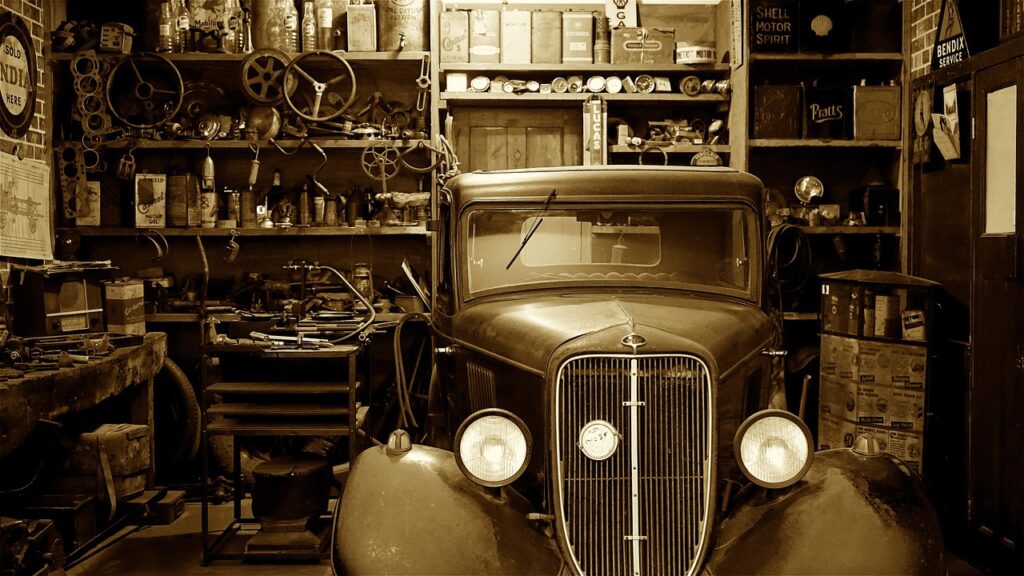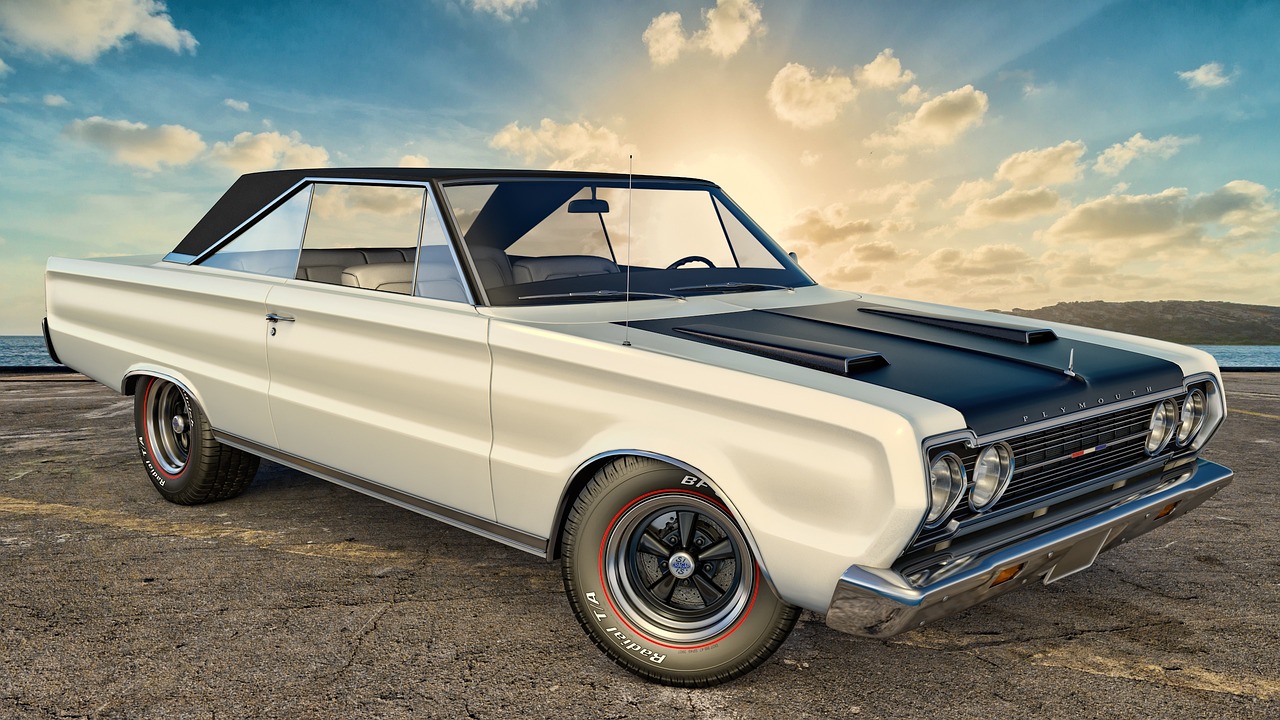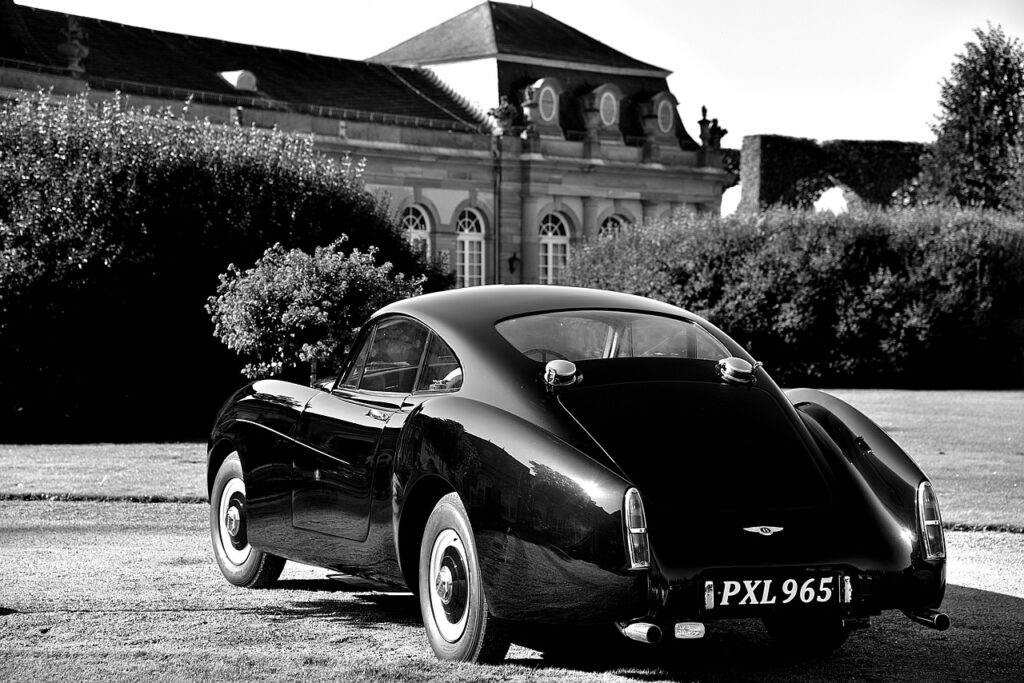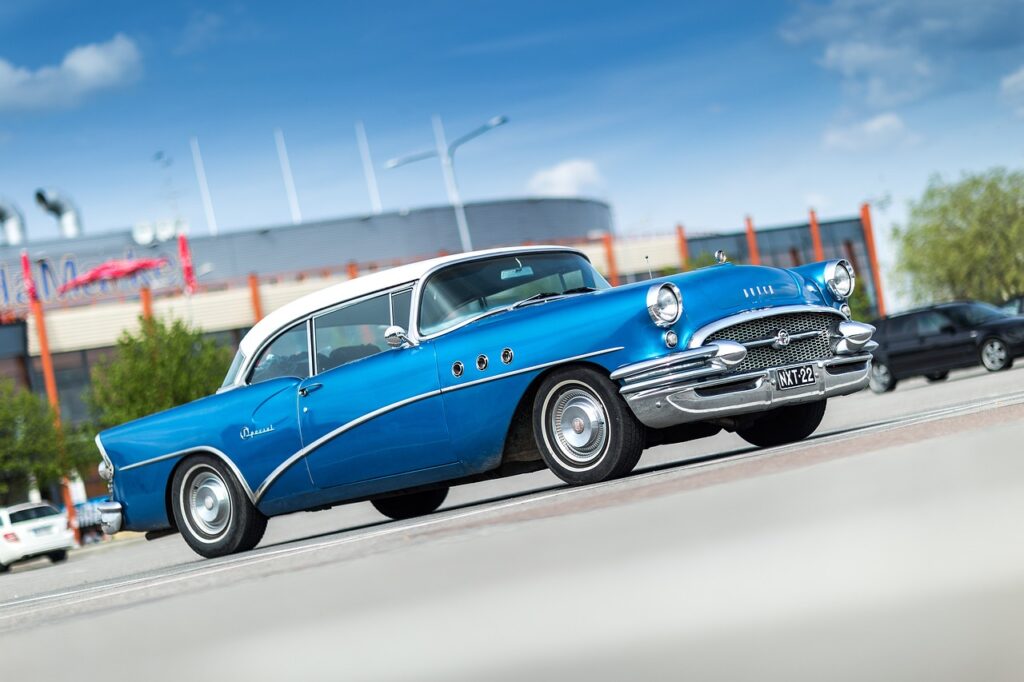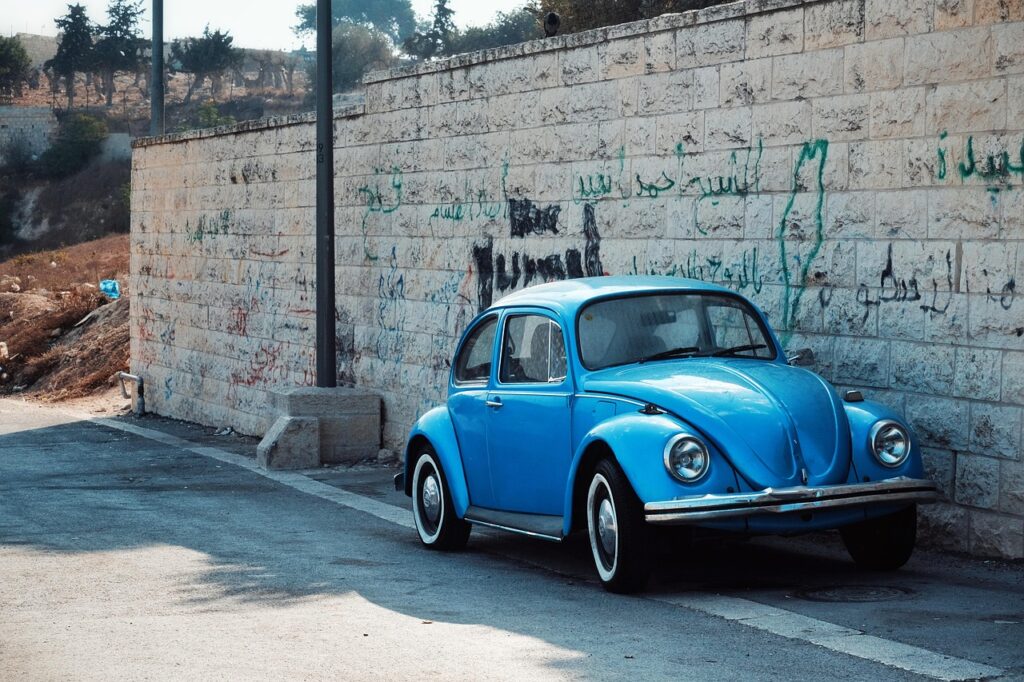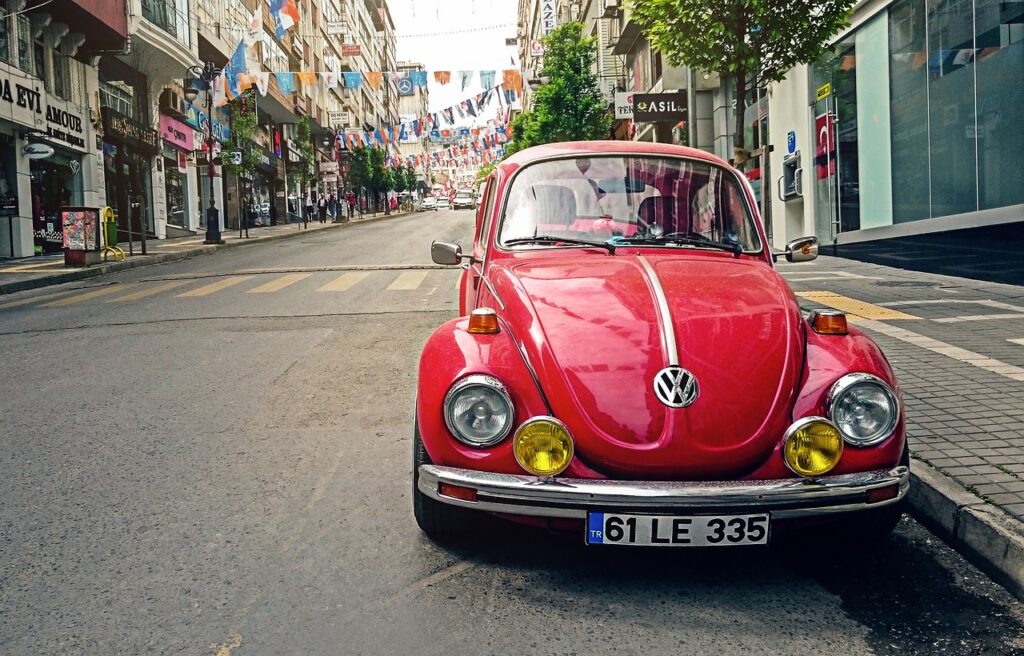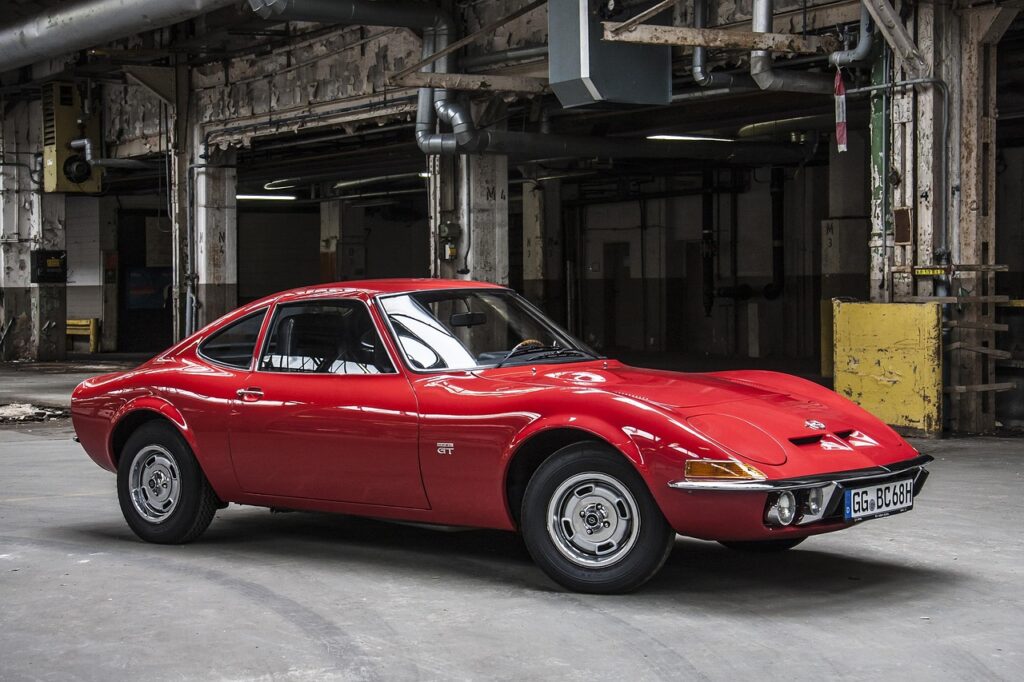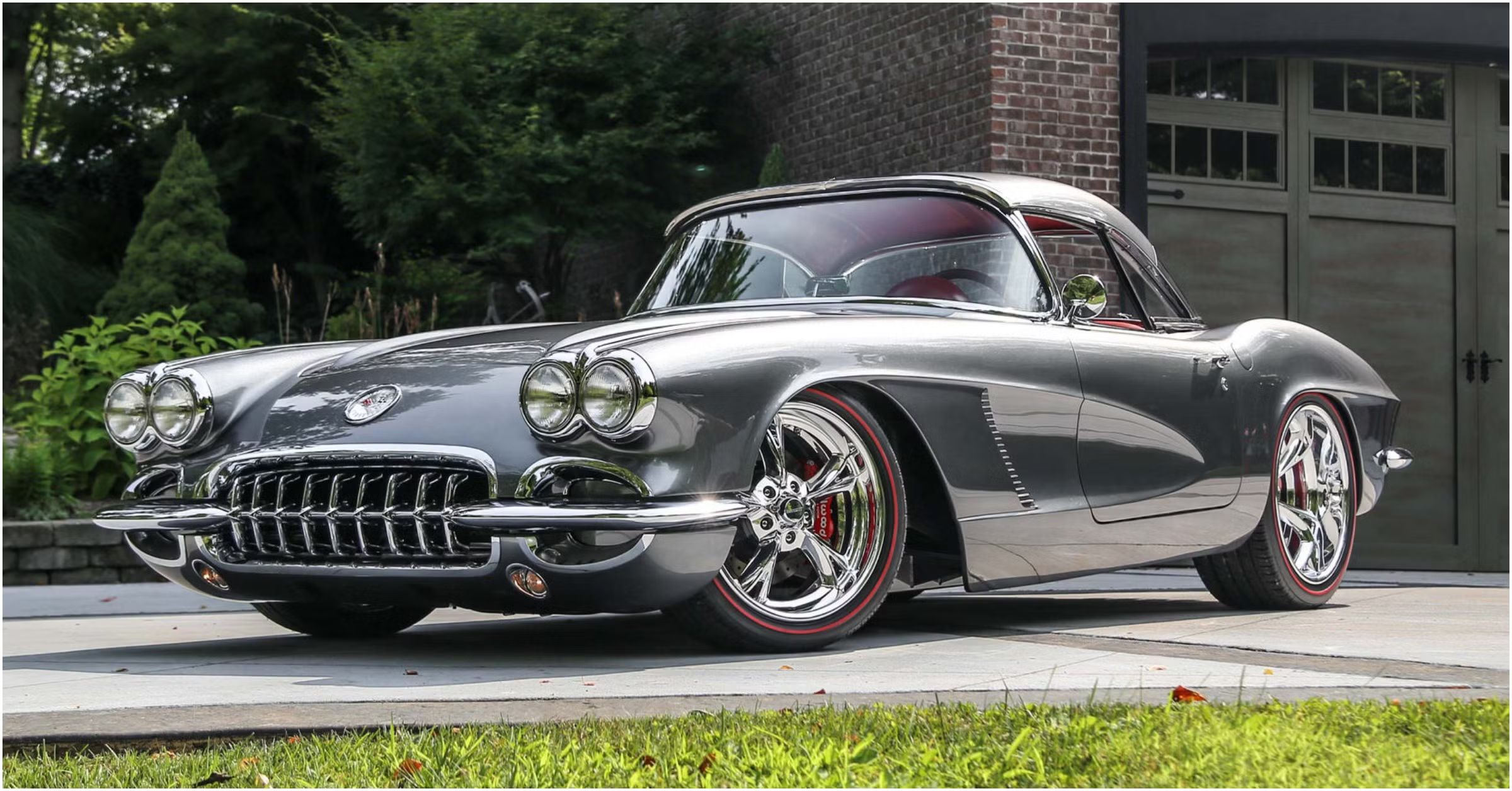
Alright, gearheads, let’s talk brass tacks about something that gets every car enthusiast’s engine revving and, let’s be honest, often sparks a fiery debate: restomods. We’re not just talking about bolting on a shiny new part; we’re diving deep into the very soul of a classic, asking where the line is drawn between revered originality and exhilarating modernization. It’s a question that cuts to the core of car culture, stirring up strong opinions from purists who demand factory perfection to modernists who crave contemporary performance under vintage skin.
For decades, the idea of breathing new life into an old ride has been a fundamental part of our automotive passion. Think about it: the classic hot-rod formula—a Mustang steering rack, a Chevy small block, and a Ford rear end—it’s been around forever. But what’s really shifted gears is the term itself: “restomod.” It’s more than just a catchy new word; it encapsulates a philosophy, a movement that’s reshaping how we appreciate and interact with our beloved classic cars. This isn’t just about preserving history; it’s about making history, one upgraded component at a time.
So, buckle up, because we’re about to tear into the definitive guide on restomods, exploring what they are, how they differ from their brethren, and why they’re igniting such passionate discussions across the automotive landscape. We’re going to peel back the layers, from the nuts and bolts to the philosophical divides, because understanding where you draw the line starts with understanding the lines themselves.
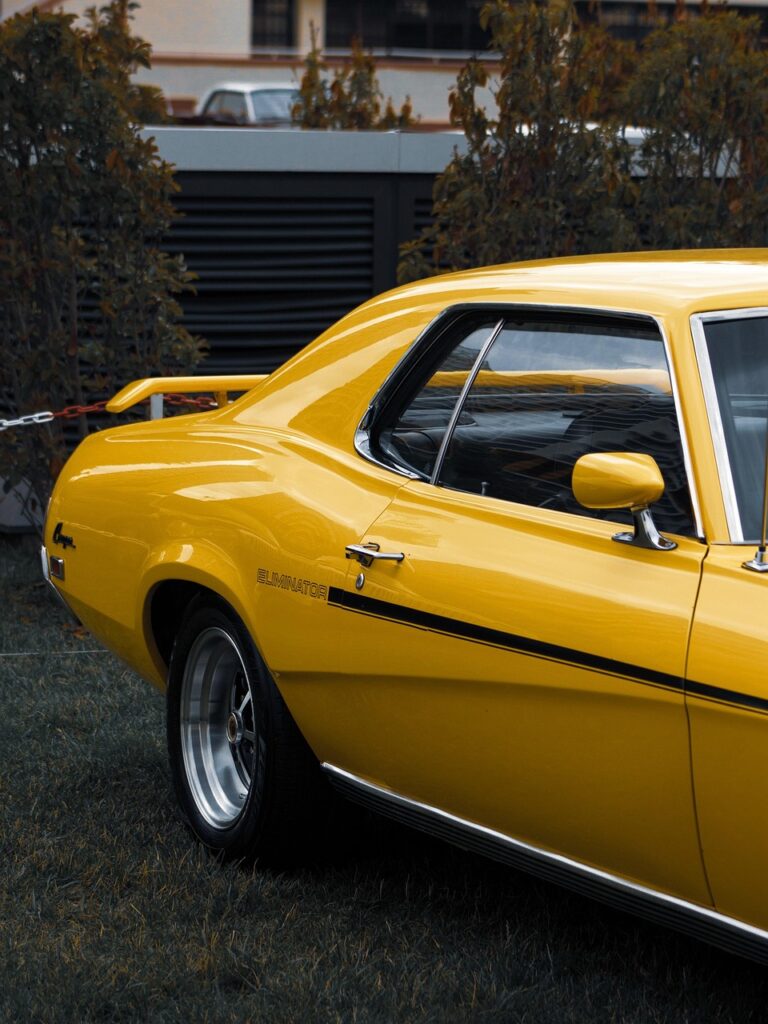
1. **What is a Restomod? The Seamless Blend of Old and New, Without the Cobbling**Let’s get the core definition out of the way, because like any good argument, you need to know what you’re actually arguing about. A restomod, in its purest essence, is a classic car that has been “restored” and “modified.” Simple, right? But the magic, and frankly, the genius, lies in the *seamless* combination of both the old and the new. This isn’t some Frankenstein creation cobbled together in a dark garage; it’s a meticulously planned symphony of heritage and cutting-edge tech.
Picture this: you see a car that looks like it just rolled off the assembly line back in its prime. The paint gleams, the chrome shines, and every panel is perfectly aligned. That’s the “restored” part doing its job, making the vehicle appear in like-new condition from an exterior standpoint.
This second, crucial component is the “modified” aspect. We’re talking about improvements that weren’t dreamed of when the car was originally built, all thanks to modern aftermarket parts and technology. The focus here is typically on enhancing handling, safety, performance, and other elements that bring a vintage ride into the 21st century. It’s about giving that classic beauty the kind of road manners and grunt it always deserved, but never had.
So, a restomod is a classic car that retains its iconic exterior aesthetic, often indistinguishable from a perfectly restored original, but beneath the surface, it boasts a heart and soul of modern engineering. It’s the ultimate stealth bomber of the classic car world – looks vintage, performs like a contemporary rocket ship. This dual nature is precisely why it generates so much fascination and, yes, so much debate.
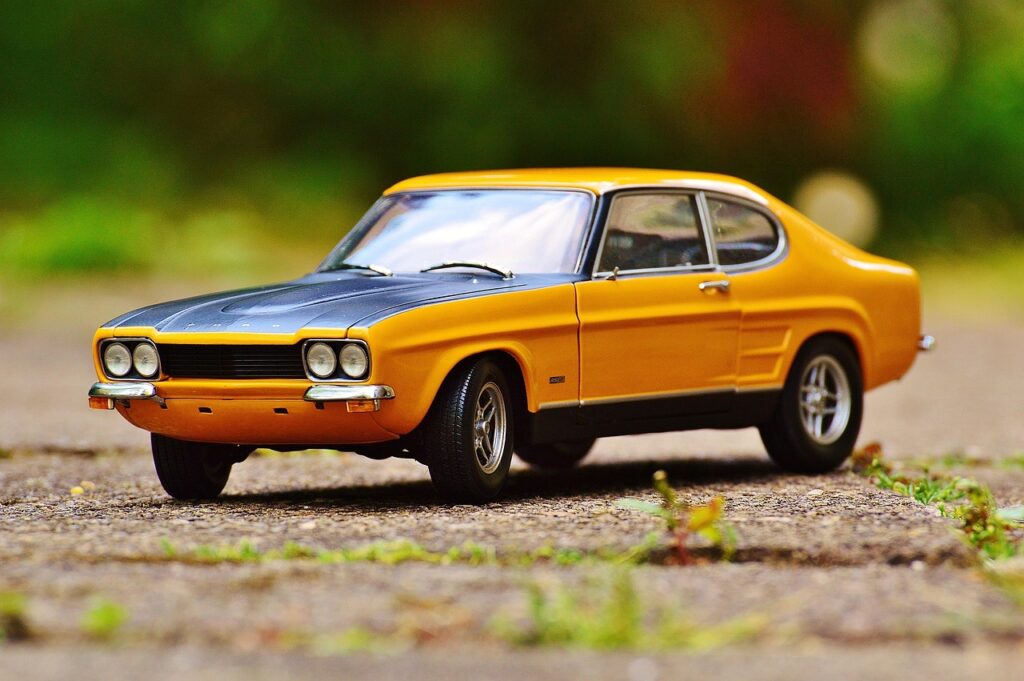
2. **Restoration vs. Restomod: The Core Divide – Purity or Practicality?**Now, before we get too deep into the restomod rabbit hole, it’s absolutely vital to understand its closest cousin, and often its fiercest rival: the pure restoration. When you acquire that classic car that truly strikes a chord in your heart, this is often the first, agonizing choice you face. Do you restore it to its factory glory, or do you take the restomod route? The answer hinges on understanding their fundamental differences.
A restoration is, quite simply, about turning back the clock. It’s a meticulous, often obsessive, endeavor to bring a classic car back to its factory greatness. This means using all, or very nearly all, original factory parts. The entire vehicle, top to bottom, inside and out, undergoes a complete makeover. The end goal? The car should look, feel, and function precisely as it did the moment it left the assembly line decades ago. It’s about historical accuracy, preserving an automotive artifact in its unadulterated form.
In stark contrast, a restomod begins with that same classic vehicle and the same intent to restore its aesthetic to original perfection. From the outside, you’d be hard-pressed to tell the difference between a high-quality restomod and a fully restored vehicle. But then, my friends, the plot thickens.
Underneath the gleaming paint and period-correct chrome is where the restomod truly deviates. Inside the cabin, under the hood, and beneath the seats, you’ll find the latest technology and aftermarket parts. This is where the vehicle’s true potential is unleashed. We’re talking about increased performance, a dramatically improved ride quality, and significantly greater safety—elements that were simply not available when the car was originally manufactured.
Ultimately, it comes down to a fundamental question: do you prioritize historical fidelity above all else, or do you want to enjoy your classic with the peace of mind and exhilarating performance that modern engineering provides? Both are valid paths, but they lead to very different driving experiences and, let’s be honest, very different garage stories.
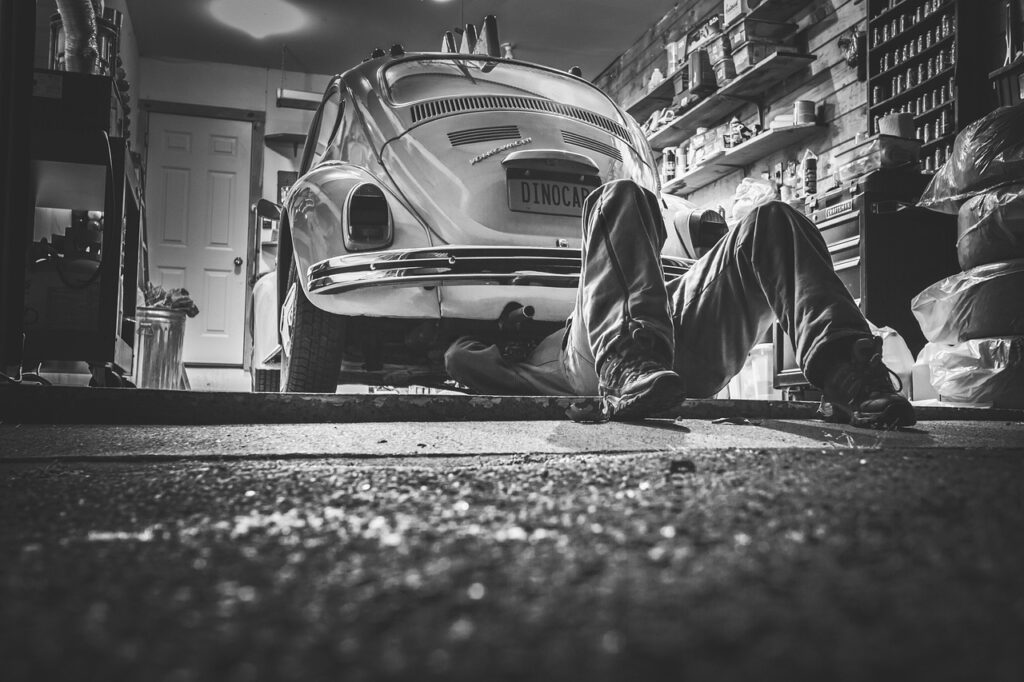
3. **Hot Rod vs. Restomod: More Than Just Aftermarket Parts – The Art of Disguise**Alright, let’s address the elephant in the garage that’s been rumbling its way into the conversation: “Isn’t a restomod just a fancy new name for a hot rod?” And while both concepts absolutely share some crucial similarities—namely, the liberal application of aftermarket parts—there’s a significant, almost philosophical, deviation that sets them apart. This isn’t just semantics; it’s about intent and aesthetics.
Hot rodding, in its glorious, rebellious spirit, is about taking the best, most powerful components from different models, eras, and manufacturers and unapologetically cobbling them together. The goal? To create an absolute beast of a car, a bespoke machine built for speed, power, and often, sheer visual aggression. You can typically spot a hot rod a mile away; its modifications, performance parts, and upgrades are usually right there, proudly on display, for all the world to see and admire.
Restomods, on the other hand, play a much more subtle, arguably more sophisticated, game. The defining characteristic? Restomods have original-looking bodies. While they might feature custom paint, slightly larger wheels, or other components that hint at modification, the overall exterior aesthetic strives for period correctness. The genius of a restomod is often found in what you *don’t* immediately see.
Beyond the visible, restomods often boast additional modifications to the interior, focusing on safety and comfort features that make the car genuinely livable in today’s world. And under the hood? Significant engine upgrades are the norm, boosting power and performance without sacrificing efficiency. The hot rod is a declaration; the restomod is a revelation, slowly unfolding its modern capabilities while retaining its vintage charm. It’s the difference between a bare-knuckle brawl and a meticulously choreographed ballet of power.
4. **Pro-Touring vs. Restomod: Driving Machines, Not Just Showpieces – The Track-Ready Classic**Okay, so we’ve navigated the choppy waters between restoration and restomod, and dodged the hot rod comparison. Now, let’s talk about another close relative that often gets lumped in: pro-touring. This is where things get truly exciting for those who believe classic cars were meant to be *driven*, and driven hard. But how does it stack up against our beloved restomod?
Pro-touring, at its heart, is a modified classic muscle car that isn’t just restored; it’s engineered to meet or, more often, *exceed* modern performance standards. These aren’t garage queens meant for admiring reflections; these are track weapons, daily drivers, and canyon carvers. The focus is squarely on making a muscle car functionally exceptional, capable of holding its own against contemporary sports cars. This means comprehensive enhancements to the brake system, suspension, drivetrain, and, of course, the aesthetics that hint at its underlying capabilities.
Now, here’s where the lines blur and why the confusion often arises: many restomod builds, especially those at the higher end of the spectrum, actually *fall into the category of being a pro-touring car*. Think about it: a restomod involves restoring a classic car’s aesthetics to match the original, while upgrading the engine, transmission, and other parts for high performance. If that high performance brings it up to modern standards, and it’s built to be driven hard, then you’ve essentially got a pro-touring restomod.
The core distinction, if we have to make one, lies in the *emphasis*. Pro-touring explicitly champions the idea of the classic muscle car as a functional, high-performance vehicle for daily use, drag strips, or race tracks. Restomod is a broader term encompassing the restoration and modification, with the goal often being a better all-around driver. But for many, a restomod *is* a pro-touring car because of its improved performance and handling. It’s less about a strict divide and more about a specialized, high-octane subgenre of the restomod philosophy. If you want to drive your classic like you stole it, but with modern precision, then pro-touring is the natural evolution of the restomod concept.
5. **The Traditionalist vs. Modernist Debate: Form vs. Function – Where Loyalty Lies**Now we come to the philosophical heart of the restomod world, the debate that stirs more passionate arguments than whether Ford or Chevy built the better muscle car: the clash between the traditionalist and the modernist. It’s not just about parts; it’s about respect, legacy, and the very purpose of a classic automobile. Where do *you* stand?
For the dyed-in-the-wool traditionalist, doing *anything* to modernize a classic car is practically sacrilege. It’s like taking a priceless antique painting and deciding to “update” it with new colors and textures. To them, the vehicle’s original appeal and greatness are paramount. The traditionalist firmly believes that lovingly restoring a vehicle to its exact factory specifications is the *only* option. They acknowledge the inherent flaws of vintage automotive technology—the vague steering, the mushy brakes, the questionable reliability—but for them, form over functionality wins every single time. It’s about preserving a moment in time, an automotive snapshot.
The modernist, on the other hand, takes a much more pragmatic, middle-of-the-road approach. They absolutely adore the classic good looks of their favorite vehicles; that’s why they bought them in the first place! But they also keenly understand that the automotive industry has made incredible strides over the past few decades. Improvements in safety, performance, and comfort aren’t just luxuries; they can fundamentally boost the car’s functionality in ways its original designers could never have imagined.
This focus on functionality over a strict, unyielding adherence to original form—both inside and out—is the hallmark of the modernist. They see a classic car not just as a static piece of history, but as a living, breathing machine that can be enhanced to truly shine in the modern era. They want to drive their classics, enjoy them, and feel confident doing so. It’s not about disrespecting the past; it’s about making the past relevant and exciting for the present and future. It’s the difference between a museum piece and a daily driver that still turns heads.

6. **Key Considerations Before You Start: Goals, Condition, Budget, Use – The Pre-Build Checklist**Before you dive headfirst into the glorious, grease-stained world of classic car projects, whether it’s a restoration or a restomod, you need to have a serious heart-to-heart with yourself. This isn’t a whimsical undertaking; it requires honesty and a clear vision. What are your true goals? What condition is that diamond-in-the-rough actually in? What kind of budget are we talking, both for time and money? And crucially, how the hell are you planning to *use* this magnificent machine?
First up: **Your Goals**. This is the absolute cornerstone of your decision. Are you dreaming of snagging coveted prizes on the car show circuit, meticulously judged for originality? Do you envision leisurely weekend drives along scenic routes? Or, let’s be pragmatic, are you looking to flip it for a profit? Keep in mind that generally, a meticulously restored, numbers-matching vehicle may hold its value better, especially if it’s rare. But if your dream is a quintessential weekend driving machine or something that truly wows crowds with modern capability, a restomod might just be your ticket.
Next, **The Car’s Condition**. Be brutal with your assessment. A car with “numbers matching” original major components is a rare beast indeed. If you’ve found one in very good condition with its original heart and soul intact, a pure restoration is a strong candidate. However, more often than not, classic cars have seen multiple owners, countless repairs, and a hodgepodge of parts over the years. A daily driver that’s been repaired with whatever was available is a prime candidate for a restomod, saving you the time, cost, and frustration of hunting down impossible-to-find original parts.
Then there’s the cold, hard reality of **Your Budget**. Let’s be frank: restoring a classic car is an adventure that can be both long and expensive. Finding no-longer-produced original parts can be an absolute treasure hunt, fraught with peril and hefty price tags. Outsourcing this to specialists? Even pricier. Restomods, while still an investment, often offer more flexibility with readily available aftermarket parts. It’s about balancing your passion with your financial reality.
Finally, **How is the Car Going to Be Used?** This is a huge differentiator. A full, numbers-matching restoration is generally the choice for a showpiece, driven occasionally or on weekends. But if you’re planning on using your classic as a daily driver, a restomod is almost certainly the better choice. Think about your commute, the desire for increased fuel efficiency, comfort, and modern conveniences like air conditioning (a necessity in many places, not a luxury!). And for those with children, or simply those who value their own hide, the addition of modern safety features like disc brakes and proper seat belts is simply non-negotiable. Your intended use should dictate your project’s direction.

7. **Why Restomod? Unpacking the Core Motivations – Safety, Performance, and Sheer Joy**So, with all these debates and decisions swirling around, why do so many car enthusiasts, like myself, land squarely on the restomod side? When you ask passionate owners for their top reasons, you’ll get a dazzling array of answers, but beneath them all, a few powerful themes emerge. It’s not just about a single factor; it’s a compelling confluence of desires that modern technology finally allows us to fulfill without sacrificing that classic allure.
First and foremost, let’s shout it from the rooftops: **Safety, safety, safety!** The technological advancements in automotive safety over the last 40 years are, quite frankly, mind-blowing. To drive a beautiful classic today, knowing you can seamlessly integrate modern disc brakes, a five-point racing harness, and other crucial safety components, without compromising its timeless good looks, is a game-changer. It’s about peace of mind, for yourself and for your loved ones. Why wouldn’t you take advantage of that?
Then there’s the undeniable thrill of **Performance**. That raw power, the rumble of a potent engine—it’s what draws us to these machines in the first place. Swapping out the original engine for something more modern, streamlined, fuel-efficient, and incredibly powerful is a winning combination that simply cannot be surpassed. It’s the exhilaration of feeling a classic car handle, accelerate, and stop like a contemporary performance vehicle. This isn’t just about speed; it’s about a driving experience that’s truly awesome.
And let’s not forget **Versatility**. A restomod isn’t just a meticulously crafted showpiece; it’s one of the most versatile vehicles you’ll ever have the pleasure of driving. It can be your daily commuter, ferrying you to work with modern comfort and reliability. It can take the family on weekend outings, complete with climate control and a decent sound system. And yes, it can still turn heads at the occasional local car show, proving that you *can* have it all. This kind of flexibility is a luxury often denied by other restoration options, making the restomod a true all-rounder.
These motivations—safety, performance, and versatility—are the bedrock of the restomod movement. They speak to a desire to fully experience and enjoy classic cars, not just admire them from afar. It’s about bridging the gap between nostalgic beauty and present-day practicality, creating a machine that truly enhances the driving life.
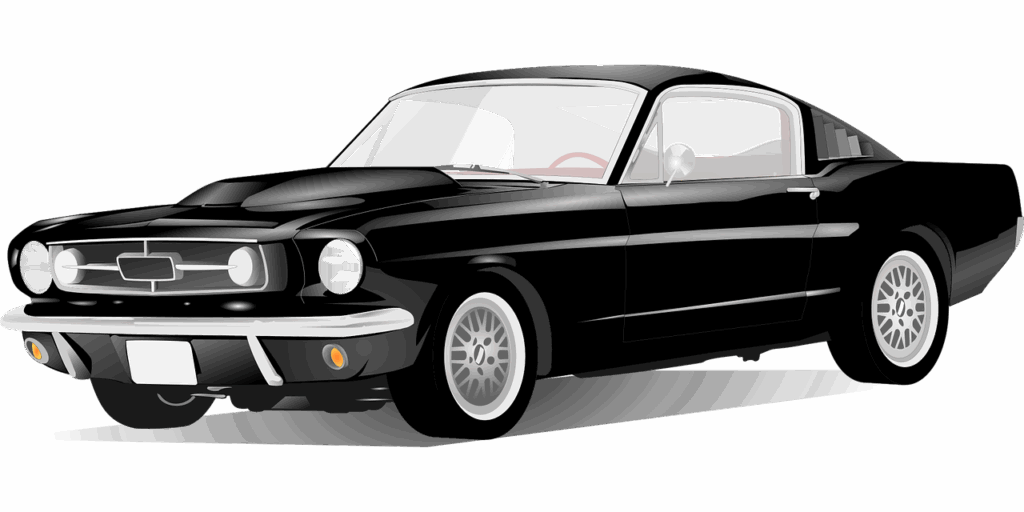
8. **Popular Modification Options: The Modern Upgrade Menu**Alright, gearheads, we’ve covered the “why” of restomods. Now for the exciting “what”—the modifications that transform a classic into a contemporary marvel. While every restomod is a unique beast, reflecting its owner’s vision, some upgrades are universally popular. These aren’t just bolt-ons; they’re thoughtfully chosen components that elevate the entire driving experience, making these vintage beauties genuinely usable and exhilarating in today’s fast-paced world.
First on nearly everyone’s list? **Disc brakes**. Let’s be real, those old drum brakes, while historically accurate, were about as effective as trying to stop a freight train with a feather. Modern disc brakes are a non-negotiable upgrade, offering superior performance and, crucially, phenomenal safety. They’re moisture-resistant and virtually free of fade, meaning you can actually *stop* when you need to, confidently pulling up that classic ride without breaking a sweat. It’s not just about going fast; it’s about stopping faster, which is arguably more important.
Then there’s the gearbox: the **overdrive transmission**. Swapping an ancient three-speed for a modern unit with additional gears and overdrive is a revelation. You get smoother shifting, better power delivery, and, perhaps most delightfully, the ability to cruise at highway speeds without feeling like your engine is about to explode. Driving at lower engine speeds reduces wear, cuts down on noise, and—prepare for this—actually boosts your fuel economy! It’s a win-win-win that makes your classic car far more enjoyable for long hauls or even just a spirited drive around town.
And what about carving corners or simply enjoying a comfortable ride? That brings us to **suspension upgrades**. Even minor tweaks can drastically alter how your classic handles. We’re talking updated A-arms, polyurethane bushings, and Panhard bars that help keep your beast tracking straight under full throttle and give you the control needed around turns. For the ultimate, though often less viable, upgrade, a complete coil-over independent suspension transforms the ride completely. It turns a wallowing old boat into a precise, responsive machine, making every drive an absolute joy.
Beyond these core mechanicals, don’t overlook the myriad of other enhancements. Modern **safety components** like lap and shoulder seat belts or even five-point racing harnesses are crucial. **Wheels and tires** aren’t just for show; modern, performance-oriented rubber offers vastly improved traction and control over anything available decades ago. And for creature comforts, imagine a classic dashboard subtly integrating a vintage-looking **entertainment head unit** that connects to your personal playlists, offers hands-free calling, or even discreet **auto navigation** and a **rearview camera**. These technological leaps make a restomod not just a performer, but a genuinely pleasant place to spend time.
9. **Classifying Restomod Modifications: Performance, Appearance, and Suspension**When you start digging into the world of restomods, it can feel like a bottomless pit of options. To make sense of it all, it’s helpful to think of modifications falling into broad, distinct categories. While there aren’t any iron-clad, federal regulations on how we classify restomods (thank goodness, can you imagine the paperwork?), we can easily sort them into three self-explanatory buckets: Performance and Power, Appearance, and Suspension. This framework helps both builders and enthusiasts understand the scope and intent of any given project, creating a common language for our shared passion.
First up, and often the most thrilling, is the **Performance and Power** category. This is where your inner speed demon truly shines. Any modification aimed at boosting the car’s raw grunt, acceleration, or overall mechanical prowess lands squarely here. Think engine swaps, transmission upgrades (like that sweet overdrive we just talked about), improvements to the rear end, and any other related components that make the car go faster, shift smoother, or simply feel more alive under your right foot. If it makes the car perform better, it’s in this category. It’s about unleashing the beast within, giving that classic chassis the modern muscle it deserves.
Next, we move to the **Appearance** category. Now, before you start thinking this is just about a fresh coat of paint (though that’s certainly part of it!), this encompasses both the exterior and interior aesthetics. We’re talking about improvements to the car’s stance, its bodywork, and yes, that gleaming paint job that turns heads at every stoplight. But it’s not just skin deep; interior improvements also fall here. Things like period-correct yet upgraded upholstery, modern safety features disguised as vintage pieces like a five-point racing harness, or those vintage-style head units for your entertainment system. It’s about perfecting the visual impact, ensuring the car looks exactly how you envision it, both inside and out.
Finally, we have the crucial **Suspension** category. This is where the magic of modern handling and ride comfort truly happens. Anything that fundamentally improves the steering, the way the car tracks, or its overall suspension system belongs here. This includes modern coil-over-shock kits, upgraded stabilizer links, and custom control arms that provide a precise, responsive feel. A restomod isn’t just about power; it’s about putting that power to the ground effectively and ensuring the car drives with the confidence and precision of a contemporary vehicle. A well-sorted suspension transforms a classic from a floaty boat into a sharp, responsive instrument, making every corner a joy.
10. **Levels of Restomod Customization: From Mild to Wild**So, you understand the categories of modifications. But how do you describe the *extent* of a restomod? Just like there’s a spectrum from a Sunday cruiser to a full-blown race car, restomods also come in different “levels” of modification. These aren’t officially codified by some grand automotive council, but they serve as a useful shorthand for understanding just how deep a project goes. For the everyday enthusiast tackling their own build, or even for those commissioning a professional, these classifications help manage expectations and define the scope of the endeavor.
The most basic level of restomod, let’s call it “Level One,” involves a vehicle that incorporates at least one of the modification classifications we just discussed. Maybe it’s a classic with a modern engine swap for more reliable power, or perhaps it’s got upgraded disc brakes for much-needed safety. The exterior might be meticulously restored, but the fundamental driving experience is subtly enhanced by a singular, impactful modernization. It’s an entry point, a gentle dip into the restomod waters, proving that even a single significant upgrade can make a huge difference in driveability and enjoyment, without overhauling the entire car.
Stepping up, a “Level Two” restomod would include modifications from two of the three classifications: Performance and Power, Appearance, or Suspension. Imagine a beautifully restored classic that not only looks factory fresh but also has a beefed-up engine and a thoroughly modern braking system. Or perhaps it boasts a stunning custom interior and a suspension system that allows it to corner like it’s on rails. These vehicles represent a more comprehensive approach, balancing multiple aspects of modernization to create a much more capable and refined classic without necessarily going to the extreme of a full reimagining. It’s about a well-rounded enhancement.
Then, for those who truly want to push the boundaries, we have “Level Three,” a designation for vehicles that apply modifications from *all three* classifications. This is the full-monty, the no-holds-barred approach where every aspect of the car – its power, its looks, and its handling – has been meticulously upgraded to modern standards. We’re talking about a classic that looks immaculate, performs with the ferocity of a modern sports car, and handles with precision that would make its original designers weep with joy. These are often the show-stopping builds, the ones that truly blur the lines between vintage charm and contemporary engineering, offering an uncompromising blend of both worlds.
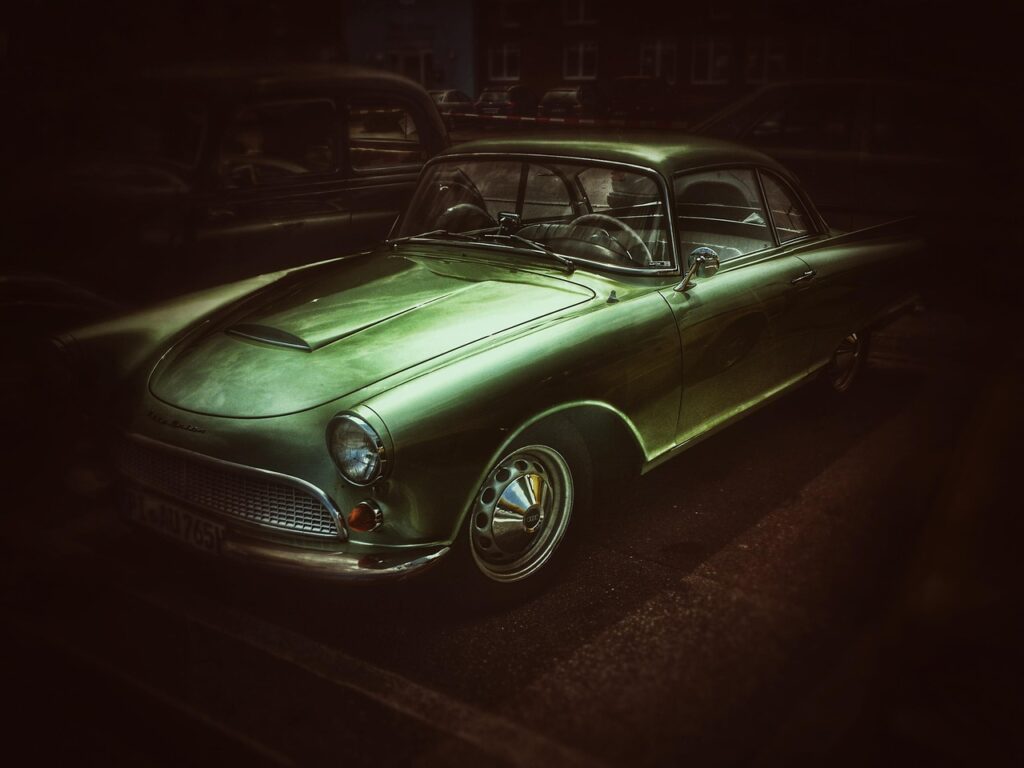
11. **The Concours d’Elegance: A Niche for Restomods?**Now, here’s where things get interesting, especially for those who think restomods are strictly for the street and far removed from the hallowed halls of traditional classic car shows. The Concours d’Elegance, a custom born in 17th-century France as a parade of aristocratic carriages, has evolved into the pinnacle of automotive beauty pageants. Translating to “competition of elegance,” these events are known for their exacting demands, often judging vehicles beyond mere “mint condition” and into a realm of perfection that sometimes allows for a subtle, yet significant, nod to restomod principles.
Typically, judging at a Concours d’Elegance event far exceeds the scrutiny of other types of auto shows, even when the show is a charitable event. The demands are rigorous, and the competitiveness is fierce. Vehicles entered here are often restored beyond what “mint condition” implies, meaning they exceed the state they were in when they first rolled off the factory line. Every single component of the car is meticulously examined, from the paint to the upholstery, the mechanicals, and the plating. To even be eligible for a trophy class, a vehicle must be in perfect, or very nearly perfect, condition.
But here’s the unexpected twist: while the emphasis is on condition and originality, certain Concours d’Elegance competitions *do* allow for modifications, provided they are original and suitable for the car’s year and model. This means that some events feature vehicles that have undergone extensive restomod efforts, elevating their condition to truly surpass “mint.” These aren’t wild, unrestrained builds, but rather vehicles where the spirit of modernization is carefully integrated, respecting the era while enhancing the overall elegance and presentation. The modifications might be original in the sense that they are period-correct or were available as dealer options for that particular era, or perhaps aftermarket accessories suitable for the time period.
This is a subtle, yet crucial, point. It means that while the hardcore traditionalists might balk, some of the most prestigious events acknowledge that judicious, period-appropriate modifications can enhance a classic’s appeal and even its “elegance.” However, it’s important to note that due to the extraordinarily rigorous standards and the deep knowledge required, achieving a Concours d’Elegance-level restomod is often beyond the average car owner’s expertise, budget, and efforts. It’s a testament to the highest level of craftsmanship, even when embracing a touch of modernization.
12. **The Unbeatable Benefits of Restomodding: Beyond the Obvious**We touched on some of the core motivations earlier, but let’s really unpack the *benefits* that make restomodding not just a trend, but a truly superior choice for many enthusiasts. This isn’t just about personal preference; it’s about a tangible upgrade to every aspect of classic car ownership. When you stack them up against other options, the advantages of a restomod become overwhelmingly clear, creating a driving experience that’s truly unmatched in its blend of nostalgia and contemporary functionality.
First and foremost, and this cannot be stressed enough: **safety, safety, safety!** The advancements in automotive safety over the last four decades are nothing short of astounding. To have the ability to integrate modern disc brakes, reinforced chassis elements, and proper multi-point racing harnesses into a classic body, without sacrificing its iconic beauty, is a monumental leap. It’s about driving with confidence, knowing that you and your loved ones are protected by technology that simply didn’t exist when the car was new. This peace of mind is invaluable, allowing you to fully enjoy your ride without constant worry.
Then there’s the sheer joy of **performance**. Swapping out an antiquated engine for a modern, streamlined, fuel-efficient, and incredibly powerful unit is a transformative experience. Imagine the exhilaration of a classic car that handles, accelerates, and stops with the precision and responsiveness of a contemporary performance vehicle. This isn’t just about raw speed; it’s about a dynamic, engaging driving experience that truly harnesses the potential of the classic design with a modern heart. It’s an awesome combination that injects a thrilling new lease on life into these machines.
And let’s talk about **versatility**. A restomod is not merely a showpiece; it is arguably one of the most versatile vehicles you’ll ever own. It can effortlessly transition from a reliable daily commuter to a comfortable family cruiser for weekend outings, complete with modern climate control and an upgraded sound system. And yes, it can still turn heads at the local car show, proving that you truly can have it all. This kind of flexibility is a luxury that pure restorations simply cannot offer, often confining them to occasional drives or trailer duty. A restomod is built to be driven, and driven often.
Beyond these core pillars, consider the marvel of **technological advances**. Modern suspensions offer unparalleled comfort, transforming rough rides into smooth cruises. The addition of air conditioning, a necessity in many climates rather than a luxury, makes long drives genuinely enjoyable. Sound-deadening materials not only provide a quieter cabin for conversations or phone calls (hands-free integration, naturally!) but also enhance the audio experience of a modern sound system. Auto navigation, remote start, and a rearview camera—features standard in most new cars—become seamlessly integrated, making the classic feel perfectly at home in the 21st century.
Finally, there’s the sheer **reliability** factor. Modern engines are built for durability and fuel efficiency, translating into fewer headaches, lower running costs, and a smaller environmental footprint. And when maintenance is needed, finding parts for a restomod is significantly easier and often less expensive, as they’re still being manufactured. This means less downtime, quicker repairs, and more time on the road, doing what these magnificent machines were meant to do: being driven. A restomod offers the best of both worlds: timeless style with modern dependability.
13. **Restomods as an Investment: Cracking the Value Code**For a long time, the traditionalists held sway, arguing that only meticulously restored, numbers-matching classics held true investment potential. But, my friends, the automotive landscape is shifting, and restomods are increasingly proving to be not just a passion project, but a surprisingly sound investment. While there will always be a market for the untouched original, the rising demand for professionally built restomods is undeniable, creating a new class of valuable automotive art.
Craig Jackson, Chairman and CEO of Barrett-Jackson, one of the titans of classic car auctions, has been an early and vocal advocate for restomods as investments. He famously embraced selling them in prime time way back in 2005, facing skepticism from journalists who questioned their “collector car” status. His retort? “Why isn’t a hand-made hot rod, or somebody that’s taken a car and put all these hours into it, not a modern day piece of art?” He highlighted their driveability as a key factor in their appeal and, therefore, their value.
And the numbers speak for themselves. We’ve seen professionally built restomods commanding serious prices at auction. Take, for instance, a multi-award-winning 1971 Plymouth HEMI ‘Cuda, built by Alan Johnson of Johnson’s Hot Rod Shop, which sold for a staggering $588,500 back in 2007. More recently, we’ve seen a 1958 Chevrolet Corvette Custom Convertible fetch $440,000, a 1938 Lincoln Zephyr V12 Coupe Street Rod hit $440,000, and a 1963 Chevrolet Corvette Split-Window Custom Coupe go for $385,000. These aren’t just cars; they’re bespoke, drivable pieces of art that capture the imagination and the wallets of discerning collectors.
The value of a restomod is complex, influenced by the quality of the restoration, the rarity of the original car, and the type and extent of the modifications. While an entry-level restomod might range from $50,000 to $75,000, a mid-grade project can easily hit $150,000 to $200,000. And for those completely custom, professionally built marvels, the worth can soar well over $500,000, with some truly rare and masterfully crafted examples exceeding $1,000,000. It’s a clear signal: the market has matured, and restomods are here to stay, not just as personal treasures, but as legitimate, appreciating assets.
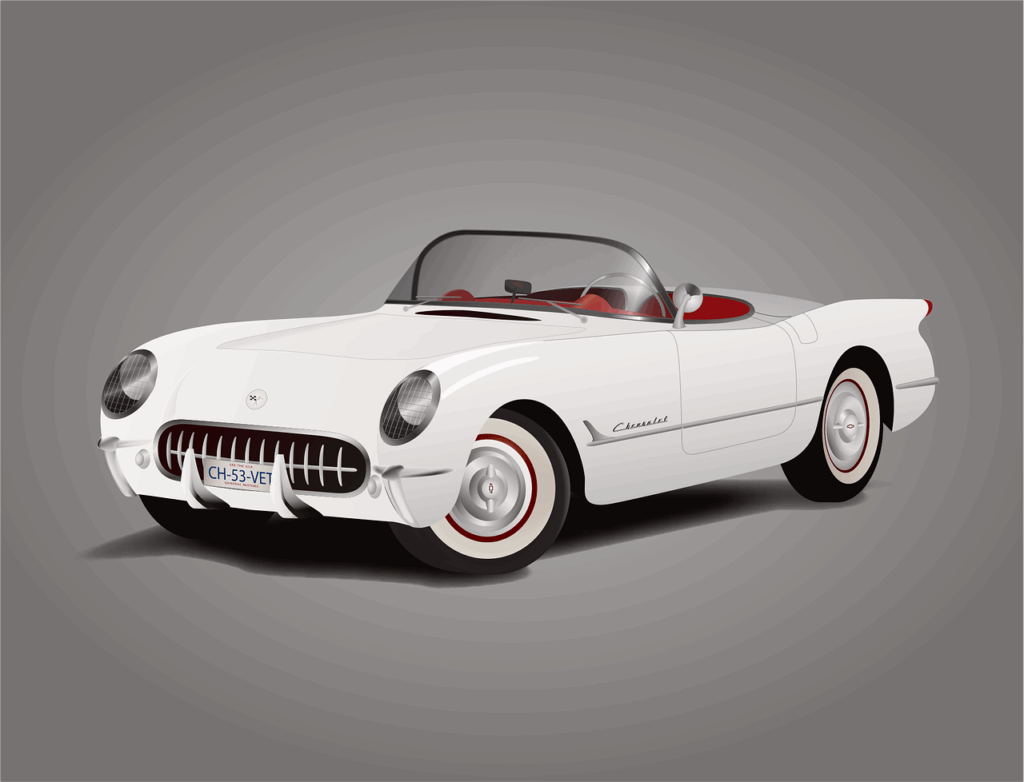
14. **The Real Cost of a Dream: Budgeting Your Restomod Project**Alright, let’s pull back the curtain on the nitty-gritty: the cost. Dreams are priceless, sure, but building that dream machine comes with a price tag, and it’s essential to be realistic about it. You might be wondering, “How much does it *really* cost to restomod a car?” The answer, like most things in this passion-driven world, is “it depends.” But we can give you some solid benchmarks to manage your expectations, because going in blind is a recipe for heartbreak (and an empty bank account).
At a general level, the cost to restomod a car typically falls within the range of $50,000 to $70,000. This is a pretty broad spectrum, and it accounts for the two main components: the restoration itself and the modifications. The final figure is heavily influenced by several factors: the level of restoration you opt for (a frame-on versus a frame-off, for example), whether you’re doing the work yourself or outsourcing it to specialists, and, of course, the number, type, and quality of modifications you choose to integrate. Every decision along the way directly impacts the bottom line, so planning is absolutely paramount.
When considering the worth of a restomod, beyond just the cost to build, several variables come into play. Assuming a quality restoration has been performed, the primary differentiators are the rarity of the original car and the extent and type of modifications. For an entry-level restomod that’s well-done but not extensively customized, you might be looking at a worth of $50,000 to $75,000. Step up to a mid-grade restomod with more significant enhancements, and that value jumps to $150,000 to $200,000. But if you’re talking about a completely custom, professionally built restomod, especially if it started as a rare vehicle, its worth can easily push past $500,000, even soaring over a million dollars for truly exceptional examples.
It’s clear that while the initial investment can be substantial, the potential for a restomod to retain or even increase its value is real, particularly for professionally executed builds and rare base vehicles. This means approaching your project with a clear budget, a realistic understanding of costs, and perhaps even working with reputable lenders who specialize in restomod financing, if needed. Just remember, full disclosure and scrutiny of every detail are your best friends when navigating the financial side of your dream build. Don’t get ripped off; educate yourself and plan wisely.
15. **The Hard Truth: Why Pure Restorations Can Be a Nightmare**We’ve championed the restomod, celebrated its virtues, and now it’s time to confront the elephant in the garage for a moment: the formidable challenges of a pure restoration. While traditionalists hold these projects in the highest regard, often equating them to preserving a museum piece, the reality for the average enthusiast can be a long, arduous, and incredibly expensive journey. Sometimes, the path of purism leads directly to frustration, endless searching, and a budget spiraling out of control.
Let’s be brutally honest: truly restoring a classic car to its original, numbers-matching glory is incredibly difficult. The first hurdle? **Cost, cost, cost!** We’re not just talking about the labor, but the astronomical expense of finding original equipment manufacturer (OEM) parts that are no longer in production. Imagine meticulously hunting down a specific fender from a particular year and model, only to find it’s rarer than a unicorn and priced accordingly. The treasure hunt for original parts can become an obsession, eating up both your time and your bank account, often leading to slow progress and deep frustration.
Then there’s the sheer **difficulty of sourcing parts**. With each passing year, finding those pristine, original components becomes exponentially harder. Many parts are simply out of production, meaning you’re scouring junkyards, online forums, and specialty dealers, hoping to find that one elusive piece. And even when you do, there’s no guarantee of its condition or authenticity. Many restorers eventually have to settle for aftermarket parts anyway, simply because the original components are impossible to find or repair, thus blurring the line they initially set out to defend.
Consider also the **practicality of a purely restored vehicle**. These cars are often, by their very nature, showpieces. They’re driven occasionally, on weekends, or trailered to events. They weren’t designed for daily commutes, for carrying children safely, or for handling modern highway speeds with the comfort we’ve come to expect. The lack of modern safety features like advanced brakes or seat belts, the absence of creature comforts like air conditioning, and the inherent unreliability of decades-old technology can make a fully restored car a joy to behold, but a pain to drive regularly. For anyone who actually wants to *use* their classic, these challenges often tip the scale decisively towards a restomod.
In almost every case, for those of us who believe cars are meant to be driven and enjoyed, the road to a pure restoration is fraught with peril and compromise. The promise of readily available, cheaper, and more reliable modern aftermarket parts, coupled with the ability to infuse modern safety and comfort, makes the restomod path not just easier, but fundamentally more rewarding for many. While a restoration has its merits for truly rare and historically significant vehicles with unlimited budgets, for most classic car enthusiasts, the challenges of purism simply don’t outweigh the practical benefits and sheer driving pleasure of a well-executed restomod.
So, there you have it, folks: the definitive journey through the exhilarating world of restomods. We’ve peeled back the layers, from defining what makes these magnificent machines tick to dissecting the passionate debates they ignite. Whether you’re a seasoned gearhead with grease under your nails or a newcomer dreaming of that perfect blend of past and present, the restomod offers an unparalleled opportunity to forge a classic that truly belongs to you—one that’s safe, thrilling, versatile, and utterly reliable. This isn’t just about owning a car; it’s about owning a piece of history that’s been reimagined for tomorrow, a roaring testament to individuality, innovation, and the enduring love affair we all have with the open road. The line, ultimately, isn’t about rigid rules, but about your vision, your passion, and where *you* want to draw it to create the ultimate driving machine.

